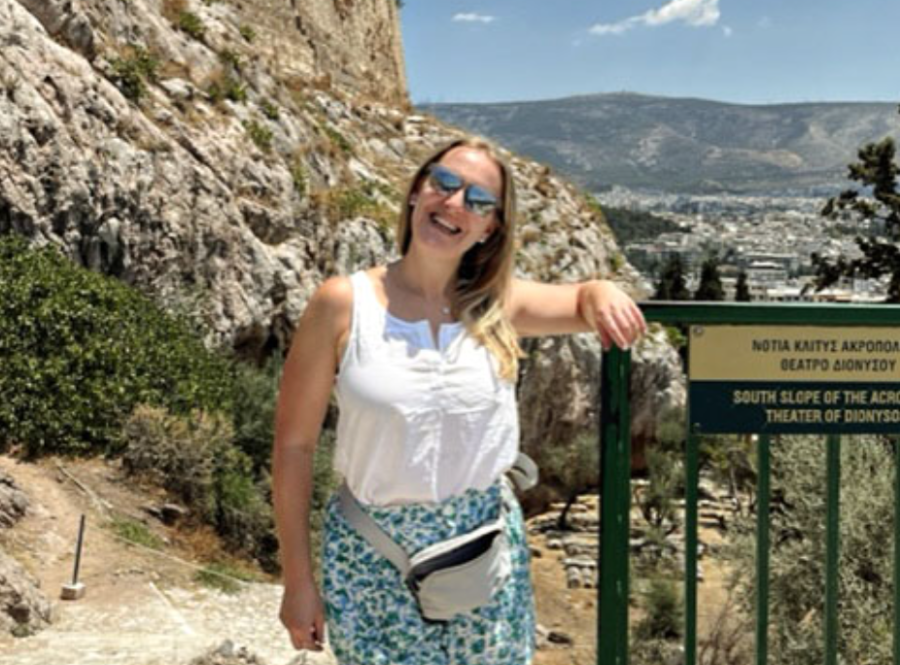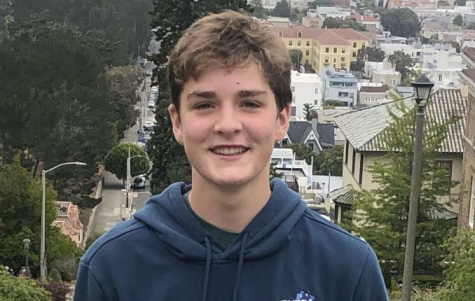Travel grants return to fund faculty and staff’s summer journeys
Nine faculty embarked on school-funded travel
September 8, 2022
This summer, English teacher Sharon Krauss strolled around Courthouse Square in Oxford, Mississippi like characters in William Faulkner’s “The Sound and the Fury,” one of the novels in her new English 12 course. Drama and Movement teacher Jenny Lifson witnessed Greek dancing in Athens which could be used in her Upper School (US) dance class. Physical Education teacher Carol Ann Loftus visited Honolulu, Hawaii and partook in yoga classes which she can teach to her students this fall. Although across the world, these trips were connected through travel grants, a school program which funds faculty and staff summer trips for personal and educational development.
According to the official travel grants description, “The purpose of the fund is twofold: one is to recognize the contribution to the school by full-time faculty. The second purpose is to provide the opportunity for faculty members and their families to enjoy the benefits of study and travel experiences.”
To be eligible for a travel grant, a faculty or staff member must have been at the school for at least seven years and have not previously received a travel grant for at least seven years. The applications are sent in by April 1, and decisions are released roughly two weeks later. The quick turnaround allows the recipient to begin booking the trip’s itinerary, and the maximum allotment is $6,400 per trip. The travel grants were available this summer for the first time since the summer of 2019.
“The program allows faculty and staff to decompress and take time for themselves while engaging in new experiences,” US Chief Learning Officer Jed Lippard said of the travel grants, founded in 1984.
The travel grants are doled out by Dr. Lippard, Head of School Jennifer Price, Chief Financial Officer Tara Gohlmann, Teaching and Learning Program Manager Vanessa Taylor, and the campus director of the specific faculty member. The applicant answers questions on the personal and professional intent of their trip along with writing a detailed plan of their money usage.
None of the nine applicants were denied travel grants this year since the unused money from 2020 and 2021 compounded. In past years money restricted the number of recipients to around six, and teachers with more seniority are usually prioritized for travel grants, Dr. Lippard said.
Along with Ms. Krauss, Ms. Lifson, and Ms. Loftus, Spanish teacher Margot Caso and drama teacher Christa Crewdson separately visited Ireland; Director of Global Education Karina Baum visited Wyoming; Grade five homeroom teacher Gabrielle Mbeki and Latin teacher Walter Young separately visited Italy; Middle School learning specialist Jamie Wallace visited England.
“The grant was born out of BB&N’s desire to give faculty some benefits that wouldn’t impede upon the school year and wouldn’t do a disservice to the students,” Dr. Lippard said.
Ms. Krauss traveled across America’s Deep South to prepare for her new English 12 course focusing on William Faulkner’s “The Sound and the Fury” and Toni Morrison’s “Song of Solomon.”
“As we’ve all seen in the last few years, the country has been more publicly undergoing a racial reckoning,” Ms. Krauss said. “This trip afforded me a better understanding of the through lines from the country’s history of slavery to its ugly legacy persisting in society today.”
Ms. Krauss received the grant in mid-April after filling out the application and talking through her trip with former US Director Geoff Theobald.
Ms. Krauss used the funds for hotel accommodations, flights, and rental cars to visit Washington, D.C. and the Smithsonian’s National Museum of African American History and Culture; Memphis, Tennessee, where she toured the Civil Rights Museum at the Lorraine Motel, the site of the assassination of Martin Luther King, Jr.; and Monticello, Virginia, Thomas Jefferson’s Charlottesville plantation among many other museums and historical sites from the Civil Rights Movement across the Deep South.
“Even though I was pretty well prepared and knew the basic history of the locations, I had some powerful visceral responses to being there and seeing names and faces and immersing myself in the experiences,” Ms. Krauss said.
While Ms. Krauss opted to remain in the United States, other faculty took the opportunity to travel beyond the borders.
Ms. Lifson said she applied to go to Greece since she had long dreamed of visiting its beautiful scenery and rich history, especially because it is the birthplace of theater. She said she’s excited to show her US students what she learned and plans on implementing much of the Greek dancing into her US dance class curriculum.
Ms. Lifson physically exerted herself, walking 30,000 steps and hiking every day to truly experience Athens, Crete, and Santorini, she said.
“As a dancer, exercise is really important,” she said. “Greece was a real adventure. It was wonderful to be able to both hike the cliff tops of Santorini from one end of the island to the other, as well as experience some of the world’s most beautiful beaches in Crete.”
Ms. Lifson said it was emotional for her to see storied monuments she had learned about since she was a child.
“Seeing the Parthenon and the Acropolis was mind blowing because you learn about this in history growing up,” she said. “And you see all these photos of it, you’re literally there, and it’s intact. That was incredible.”


